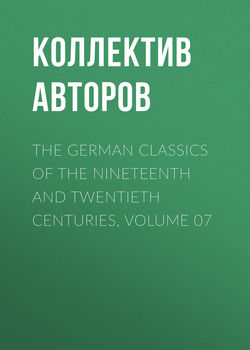Читать книгу The German Classics of the Nineteenth and Twentieth Centuries, Volume 07 - Коллектив авторов, Ю. Д. Земенков, Koostaja: Ajakiri New Scientist - Страница 14
GEORG WILHELM FRIEDRICH HEGEL
INTRODUCTION TO THE PHILOSOPHY OF ART (1820-21)
THE CONTENT AND IDEAL OF ART
SYMBOLIC ART
ОглавлениеArt begins when the spiritual idea, being itself still indefinite and obscure and ill-comprehended, is made the content of artistic forms. As indefinite, it does not yet have that individuality which the artistic ideal demands; its abstractness and one-sidedness thus render its shape defective and whimsical. The first form of art is therefore rather a mere search after plasticity than a capacity of true representation. The spiritual idea has not yet found its adequate form, but is still engaged in striving and struggling after it. This form we may, in general, call the symbolic form of art; in such form the abstract idea assumes a shape in natural sensuous matter which is foreign to it; with this foreign matter the artistic creation begins, from which, however, it seems unable to free itself. The objects of external nature are reproduced unchanged, but at the same time the meaning of the spiritual idea is attached to them. They thus receive the vocation of expressing it, and must be interpreted as if the spiritual idea were actually present in them. It is indeed true that natural objects possess an aspect which makes them capable of representing a universal meaning, but in symbolic art a complete correspondence is not yet possible. In it the correspondence is confined to an abstract quality, as when, for example, a lion is meant to stand for strength.
This abstract relation brings also to consciousness the foreignness of the spiritual idea to natural phenomena. And the spiritual idea, having no other reality to express its essence, expatiates in all these natural shapes, seeks itself in their unrest and disproportion, but finds them inadequate to it. It then exaggerates these natural phenomena and shapes them into the huge and the boundless. The spiritual idea revels in them, as it were, seethes and ferments in them, does violence to them, distorts and disfigures them into grotesque shapes, and endeavors by the diversity, hugeness, and splendor of such forms to raise the natural phenomena to the spiritual level. For here it is the spiritual idea which is more or less vague and non-plastic, while the objects of nature have a thoroughly definite form.
The incongruity of the two elements to each other makes the relation of the spiritual idea to objective reality a negative one. The spiritual as a wholly inner element and as the universal substance of all things, is conceived unsatisfied with all externality, and in its sublimity it triumphs over the abundance of unsuitable forms. In this conception of sublimity the natural objects and the human shapes are accepted and left unaltered, but at the same time recognized as inadequate to their own inner meaning; it is this inner meaning which is glorified far and above every worldly content.
These elements constitute, in general, the character of the primitive artistic pantheism of the Orient, which either invests even the lowest objects with absolute significance, or forces all phenomena with violence to assume the expression of its world-view. This art becomes therefore bizarre, grotesque, and without taste, or it represents the infinite substance in its abstract freedom turning away with disdain from the illusory and perishing mass of appearances. Thus the meaning can never be completely molded into the expression, and, notwithstanding all the aspiration and effort, the incongruity between the spiritual idea and the sensuous form remains insuperable. This is, then, the first form of art-symbolic art with its endless quest, its inner struggle, its sphinx-like mystery, and its sublimity.
